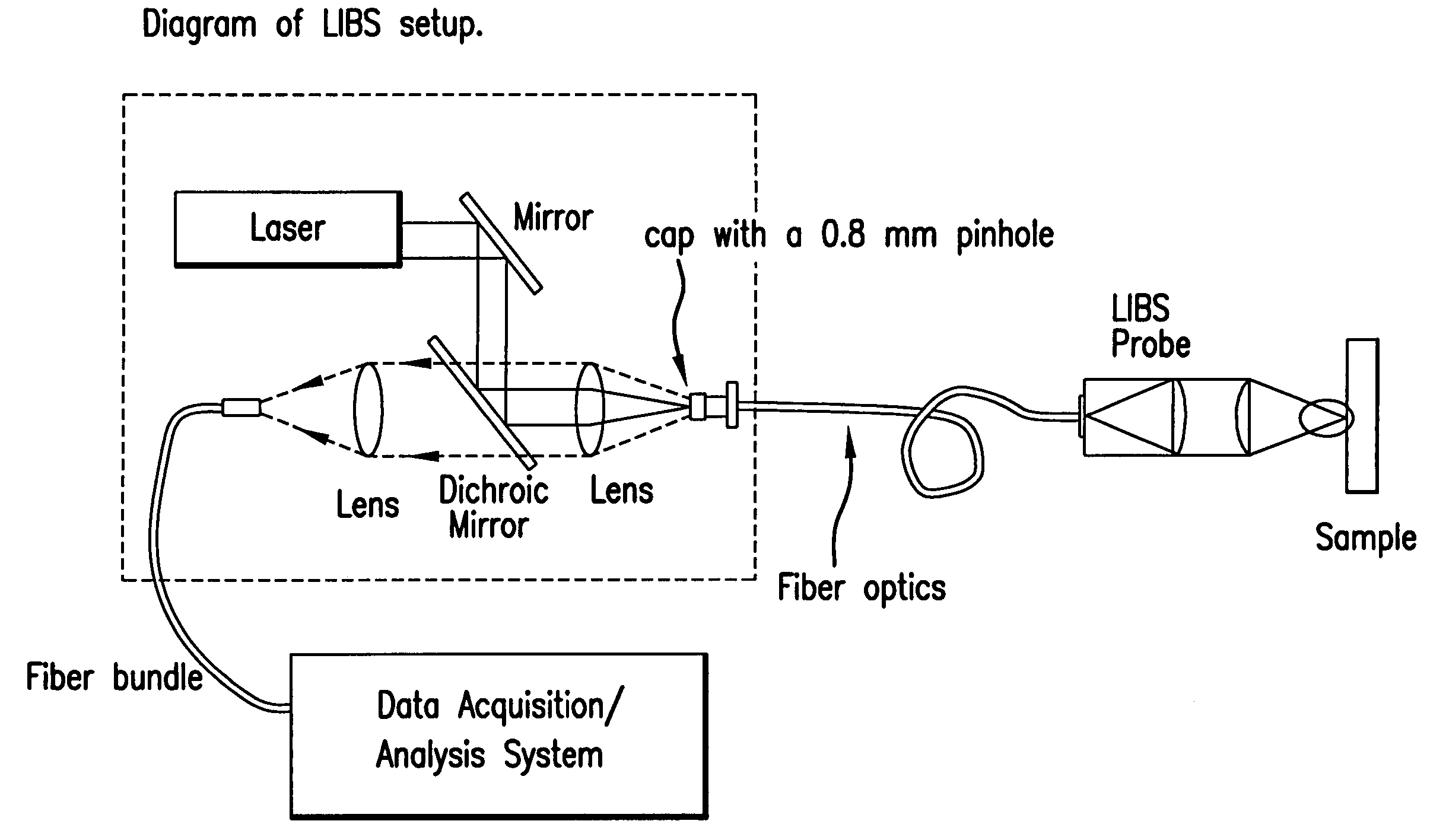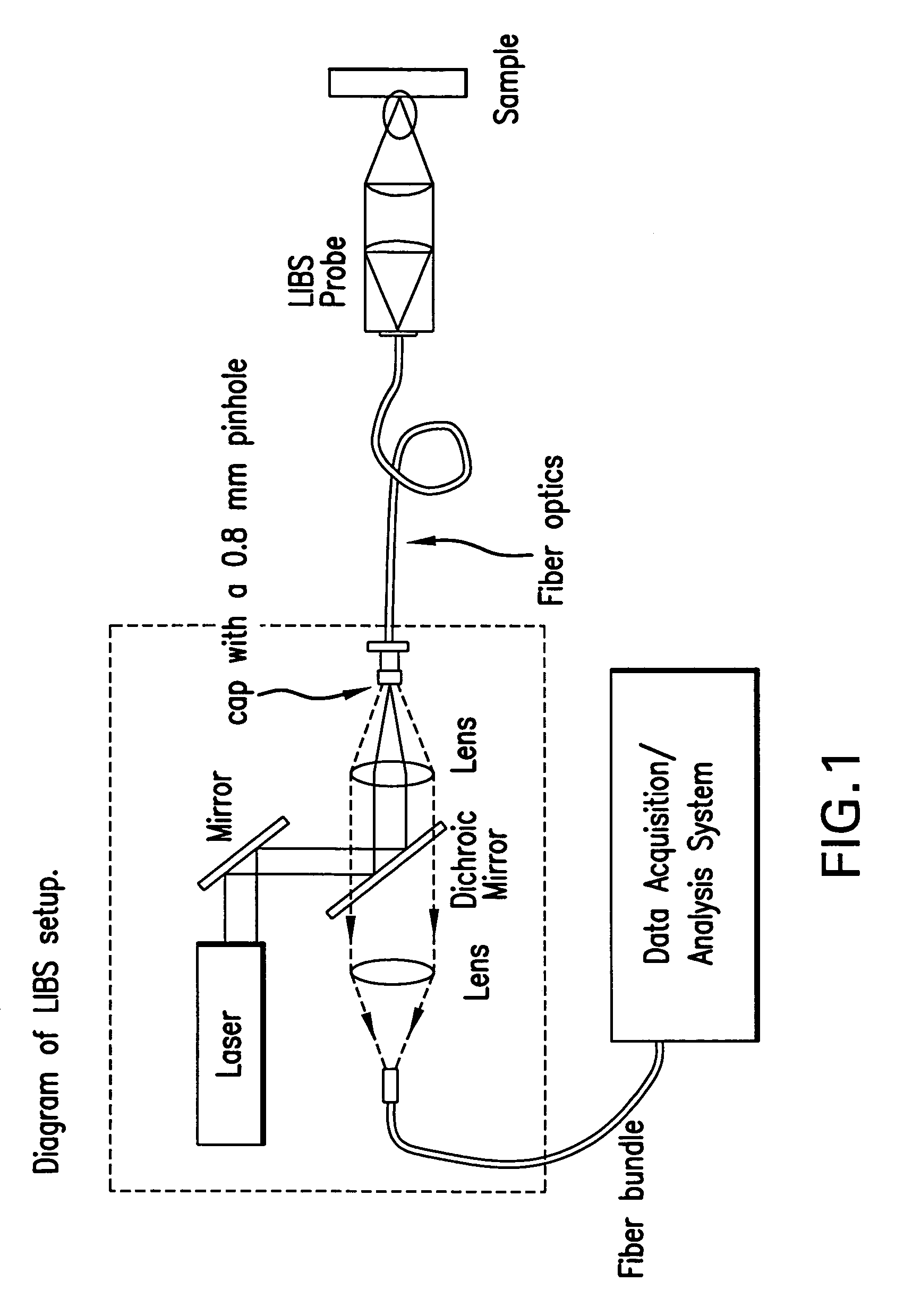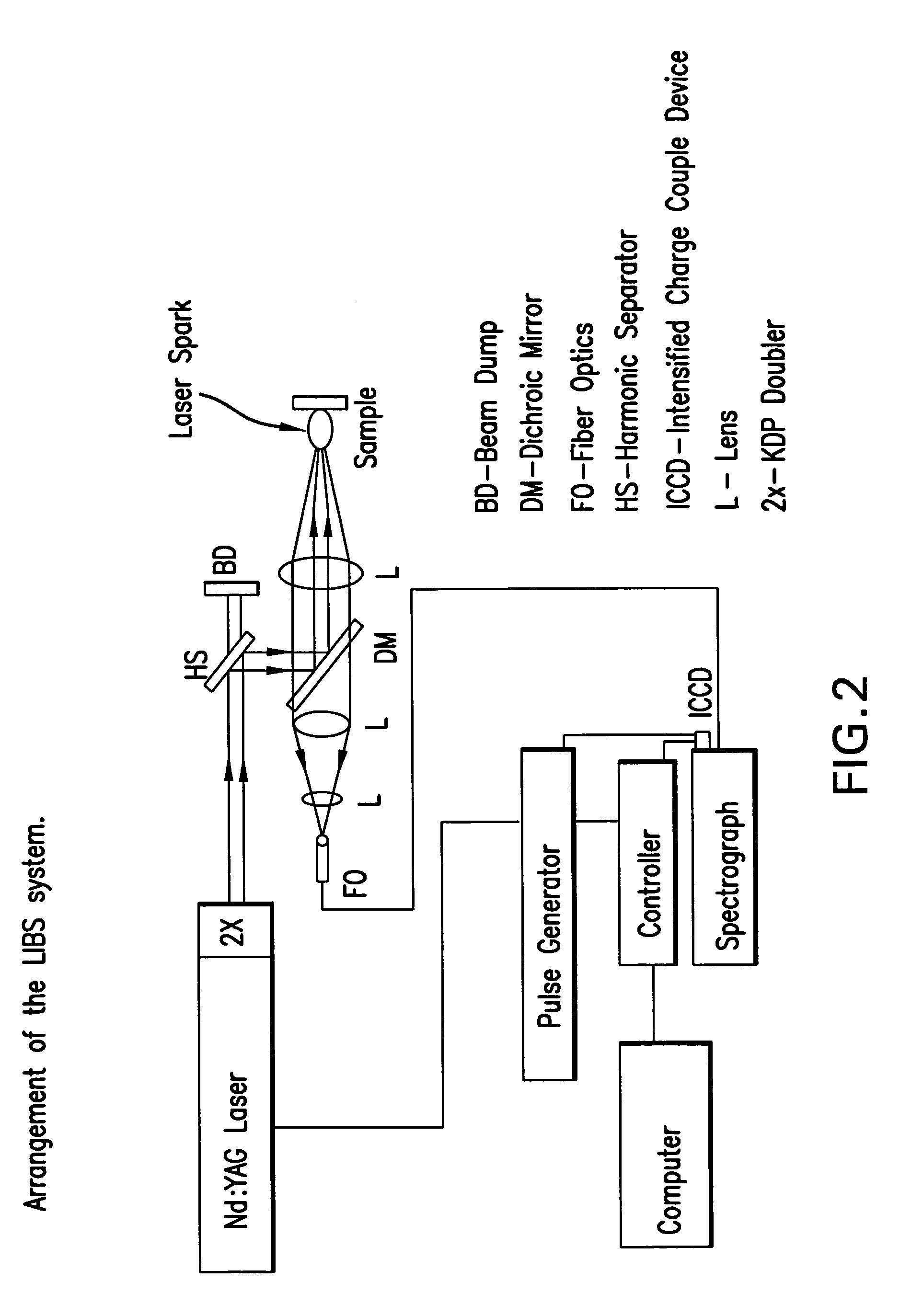Laser-induced breakdown spectroscopy for specimen analysis
a technology of specimen analysis and breakdown spectroscopy, which is applied in the field of spectroscopy, can solve the problems of requiring significant time for analyzing samples, limited disclosure to libs methodology, and high cost of different methodologies, and achieves rapid accurate diagnosis of breast cancer and bladder accurate diagnosis, the effect of reducing the trauma of the patien
- Summary
- Abstract
- Description
- Claims
- Application Information
AI Technical Summary
Benefits of technology
Problems solved by technology
Method used
Image
Examples
example 1
[0067]A device is constructed for detecting the presence and / or concentration of at least one chemical element in a biological or other organic specimen. The device comprises a probe; a laser light source; a detector all directed on the specimen. The specimen may be analyzed in vivo, or separate from the host organism. The specimen may, for instance, be blood, nail, hair, tissue from any part of a human, other animal, plant, or combinations thereof.
example 2
[0068]According to this embodiment is an apparatus in which the laser light is transmitted to the probe through a harmonic separator for directing a laser light from the laser light source; a dichroic mirror for reflecting the laser light from the harmonic separator; and a coupling lens for coupling the laser light at an input end of a multi-modal optical fiber. In another embodiment of the invention, the apparatus further comprises a data acquisition-analysis system.
example 3
[0069]Another embodiment of the invention is a method for detecting the concentration of at least one chemical element in a specimen. The method comprises directing the laser light onto the specimen; atomizing a portion of the specimen with the laser light; and evaluating the light emitted from the atomized portion to determine the concentration of at least one chemical element.
PUM
 Login to View More
Login to View More Abstract
Description
Claims
Application Information
 Login to View More
Login to View More - R&D
- Intellectual Property
- Life Sciences
- Materials
- Tech Scout
- Unparalleled Data Quality
- Higher Quality Content
- 60% Fewer Hallucinations
Browse by: Latest US Patents, China's latest patents, Technical Efficacy Thesaurus, Application Domain, Technology Topic, Popular Technical Reports.
© 2025 PatSnap. All rights reserved.Legal|Privacy policy|Modern Slavery Act Transparency Statement|Sitemap|About US| Contact US: help@patsnap.com



